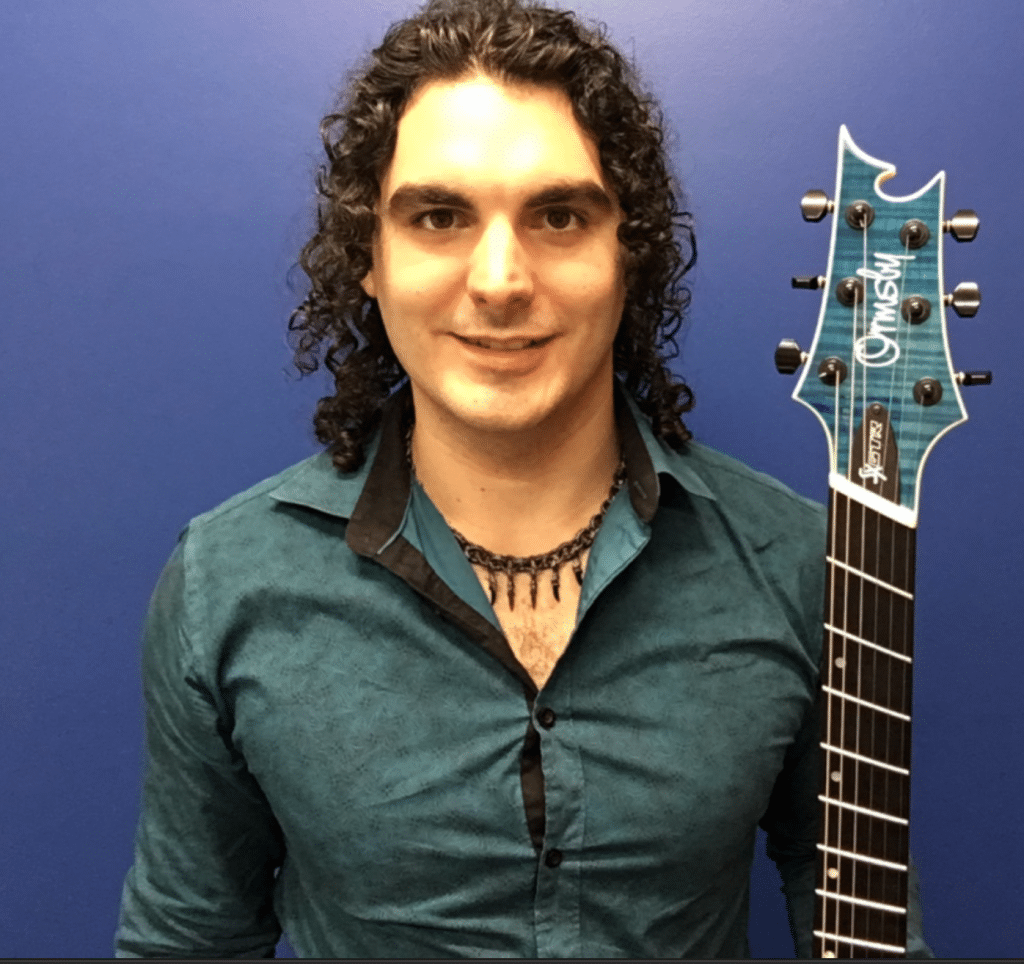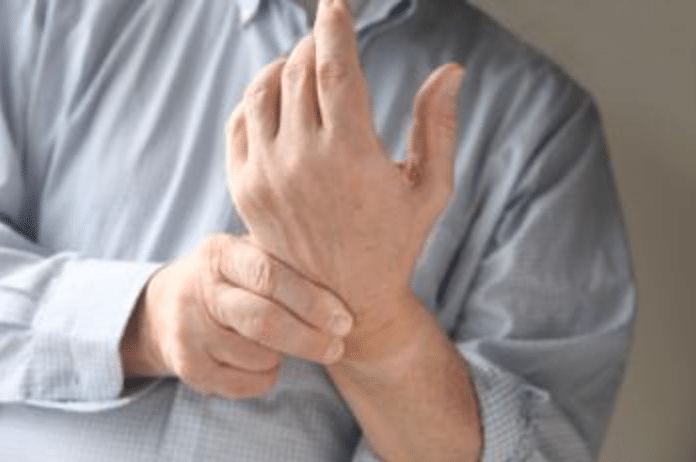If you play guitar long enough you’re bound to have a day when you over do it and suffer a minor guitar related injury. Most of the time the pain associated with guitar playing is finger tenderness, which goes away within a couple of weeks of playing as your hands adjust and callous up. Unfortunately from time to time a more serious injury can result from overpricing and can be very disruptive to your guitar playing progress and health in general.
Not many people know but I struggled with various Repetitive Strain Injuries (RSI) a decade ago and even had to stop playing for a period of 18 months as I went through therapy after therapy before eventually having surgery to decompress a nerve in my left elbow. This period was extremely disruptive and frustrating for me but gave me a whole new perspective on playing guitar and how fortunate I am to have a second shot at learning how to play.
In this article I will outline some of the most common guitar related injuries as well as my experience overcoming RSI which plagued me for almost 3 years. I hope that by sharing my story I can help at least one person avoid developing an RSI related guitar injury like tendonitis, tenosynovitis, carpal tunnel or cubital tunnel, or can help other players,who like me have been in pain for months or even years with no hope or end in sight, start playing pain free.
If you’ve been diagnosed with, or believe you have Carpal Tunnel Syndrome, Cubital Tunnel Syndrome, Tendonitis, Tenosynovitis or any other from of RSI then I hope that this article is a first step-in the direction of one day playing guitar 100% pain free.

Quick Disclaimer
I am not a doctor nor am I qualified to give medical advice. In the event that you have developed a guitar related injury should immediately stop playing and seek advice from a professional.
The advice I share here is based on my experience working with dozens of medical professionals, specialists and physical therapists over a period of 3 years and is a summary of what worked for me in my situation.
An Overview Of Common Guitar Related Injuries
Finger Tenderness
Hand Fatigue
Repetitive Strain Injury (RSI)
Tendonitis
Tenosynovitis
Carpal Tunnel Syndrome
Cubital Tunnel Sundrome

My Battle With RSI
The Perfect Storm
The 3 Things That Helped Me Overcome My RSI Problems
-
Stretching
-
Good Posture
-
Awareness and Reduction of Excess Tension
1) Stretching
2) Posture
-
Getting yourself a good quality padded guitar strap that is wide and spreads the weight out across your shoulder.
-
Adjusting your guitar strap so that your guitar is the same height regardless of if you are standing or sitting.
-
Adopting the classical guitar posture so that your shoulders maintain an even T shape.
-
Practicing with a mirror (or recoding yourself practicing) so that you are aware of your posture and can adjust towards the T shape.
-
Having a comfortable chair that can be adjusted to any height you need.
-
Adjusting the height of your desk and chair so that your arms sit at a 90 degree angle when typing on a computer or writing.
-
Having a footstool or other item that you can use to support your leg and maintain good posture.
-
Having your guitar setup and serviced regularly so that it is in good condition and facilitates ease of playing.
-
Have an appropriate gauge of strings to suits your playing style.
-
Never sitting on the end of your bed to play
-
Sitting in a position that causes you to hunch over your guitar
-
Practicing 3 times throughout the day rather than doing one long practice session
3) Awareness and Reduction of Excess Tension
Other things I found helpful
-
Wearing a brace when sleeping – I bought a postage cylinder from the post shop and put a sheet of foam inside it which kept my arm straight when I slept. I also had a wrist brace for this same purpose when I had carpal tunnel.
-
Massage Therapy
-
Reading the books The Mind Body Prescription and Healing Back Pain by Dr John E Sarno
- Icing my hands and elbows before bed

Your Mindset Towards Recovery
-
Make a decision that you are going to recover
-
See a medical professional for a proper diagnosis and a recovery plan
-
Rest for the recommended period of time so that you stop damaging your muscles and tendons and can begin recovering.
-
Start identifying all the stresses in your life and any possible contributors to your overuse injury.
-
Systematically eliminate as many of the stresses and causes of your pain as you can
-
Learn to manage the ones that you can’t eliminate entirely
-
Increase your awareness of tension, posture and bad technique as you gradually increase your play time.
-
Gradually increase the amount of time that you play each week, and be disciplined to avoid re-injuring yourself.
-
Week 1 – play for 5 minutes, 3 times a day
-
Week 2 – play for 10 minutes, 3 times a day
-
Week 3 – play for 15 minutes, 3 times a day
-
Week 4 – play for 20 minutes, 3 times a day
In Summary
If you found this article helpful you can read part 2 on 8 Essential Guitar Stretches To Help You Overcome Carpal Tunnel.
PS. Since writing this article over 2 years ago I’ve created a Youtube video on how to overcome chronic pain as a guitarist which you can watch below.
About The Author

Michael Gumley is a Guitarist and Musical Educator based in Melbourne Australia. He is the founder of Melbourne Guitar Academy, Guitar Ninjas and the Guitar Dojo Online and is on a mission to raise the standard of contemporary guitar education worldwide.
Michael suffered from several guitar induced RSI injuries in his early twenties and would happily take time to help any guitarist suffering fro similar injuries on their own path to recovery. You can reach out to Michael to social media @MichaelGumley or email him via (info)@melbourneguitaracademy.com
A proper practice plan can be very beneficial for those seeking to recover from or manage a hand injury. If you’re looking for guitar lessons in Melbourne or need assistance in overcoming your RSI Injuries visit Melbourne Guitar Academy to book a free initial consultation (in person or via zoom) so that we can help assist your recovery.


Hey is there a part 2 to this article?
Hey Sam
I’ll have to have a look and get back to you, I thought there was but I may have not published it.
Hey Sam
Part 2 can be viewed here: https://melbourneguitaracademy.com/8-must-know-stretches-for-guitar-players-to-avoid-rsi-carpal-tunnel/
I’ve also posted a video of 8 essential stretches on Youtube (embedded in the post)
Still waiting for part 2
Hello Idar, sorry to keep you waiting. It has been a very busy time for me but I look forward to writing part 2 soon.
Hello Idar
Good news!
I’ve recorded two videos for Youtube which I’ll be releasing this week and next, along with the accompanying article for part 2!
Stay tuned
Hello Idar
Part 2 can be viewed here: https://melbourneguitaracademy.com/8-must-know-stretches-for-guitar-players-to-avoid-rsi-carpal-tunnel/
So glad to have you back! Savour your little corner and visit it often. Palmer Gariti
Thank you Alita
One of our guests not too long ago encouraged the following website. Gregg Coronel
Thanks for your recomendation!